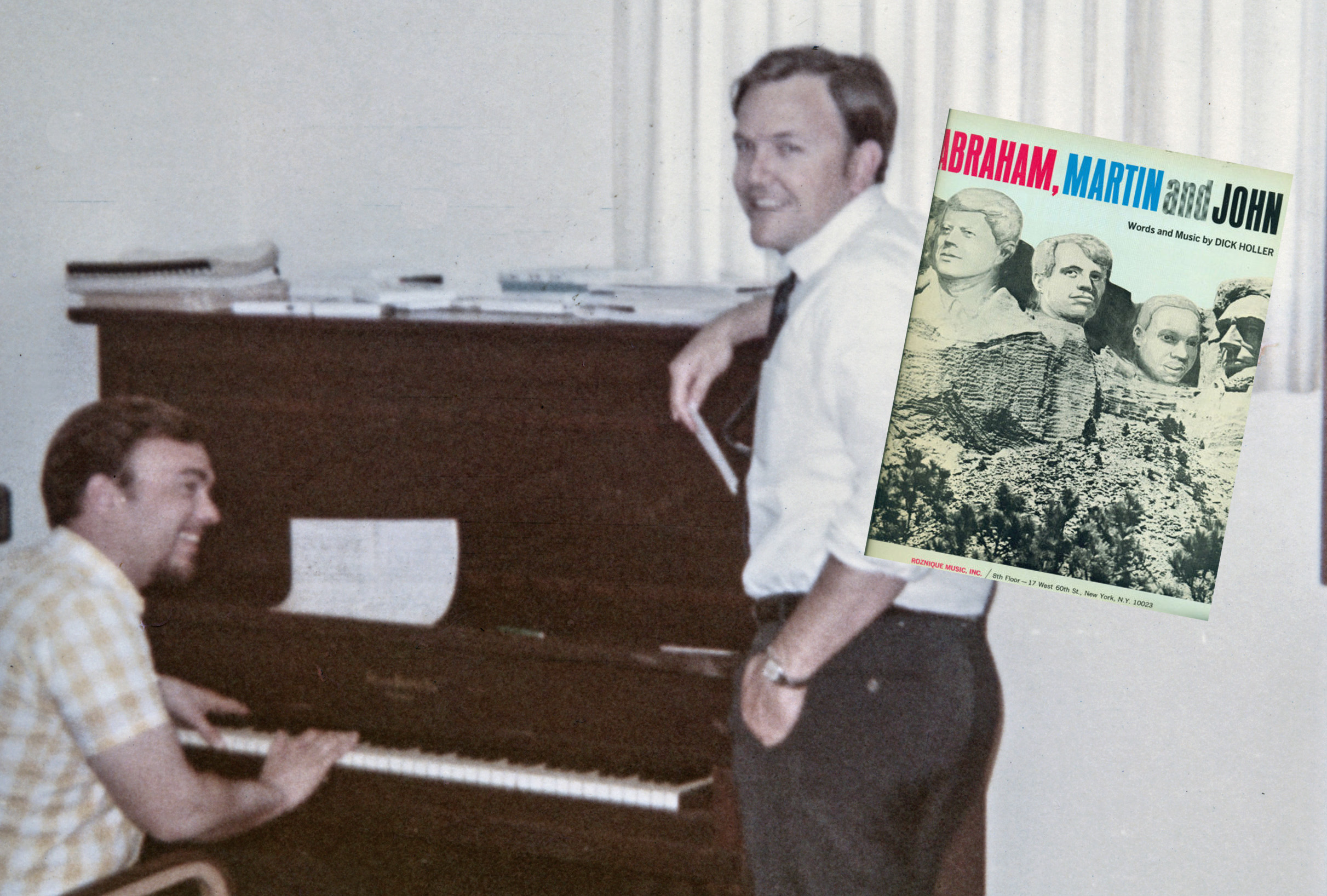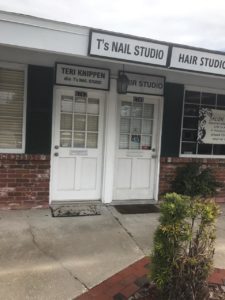Vintage St. Pete: ‘Abraham, Martin and John,’ the local connection

It’s one of the most-recorded songs of the last 50 years, and is often used as the soundtrack for documentaries about a tumultuous time in recent American history.
Dick Holler’s “Abraham, Martin and John” began life right here in St. Petersburg.
Written in the immediate aftermath of the June 5, 1968 assassination of presidential candidate Robert F. Kennedy, which happened just two months after Martin Luther King, Jr. was gunned down, the song touched a chord in Americans forced to deal with the roiling emotions of the time.
In the lyrics, Holler tied together, in chronological order, the murders of Abraham Lincoln, John F. Kennedy, King and Bobby Kennedy:
Anybody here seen my old friend Abraham?
Can you tell me where he’s gone?
He freed a lot of people, but it seems the good die young
I just looked around, and he’s gone.
At song’s end, all four martyred ghosts walked off into the distance together.
Today, “Abraham, Martin and John” continues to resonate all over the world.
To pick up the story from the very beginning, we must go back to “Snoopy vs. the Red Baron,” the 1966 novelty hit about the dog from the Peanuts cartoons and his imaginary air battles with “the bloody red baron of Germany.”
Ten, twenty, thirty, forty, fifty or more!
Holler co-wrote that schoolyard favorite with record producer Phil Gernhard, who was at the time a student at Stetson University College of Law in Gulfport. When the Gernhard-produced record by an Ocala teen band called the Royal Guardsmen sold five million copies, the ambitious young producer opened an office at 6745 1st Avenue S.
Gernhard Enterprises’ first hire, as staff songwriter, was Dick Holler. He’d been working in a hardware store in North Carolina, raising two sons by himself, and was only too happy to relocate to Florida and step things up a peg.
“Snoopy vs. the Red Baron” was followed by “Return of the Red Baron” and “Snoopy’s Christmas”; Gernhard and Holler had their hands full writing and producing Royal Guardsmen records, as long as the public was still buying.

In early June of ’68, the two were in New York City putting the finishing touches on an album called Snoopy For President when fate stepped in.
“It’s a three or four-day project, so we’re at a hotel,” Holler recalled. “I’m asleep, and Phil comes in. He says wake up, they just shot Bobby.”
Kennedy – barely two months into his candidacy – had been murdered following a victory speech in Los Angeles.
“We turn on the television and we stay up for a pretty long time. Then we decide to cancel the session and go back home to St. Petersburg.”
Back in Florida, “We didn’t really feel like working, but Phil said ‘Let’s go in and check our calls,’” said Holler. “The first day, I went into the back room and I wrote ‘Abraham, Martin and John.’ I did a treatment like the Kingston Trio might do it.”

Gernhard Enterprises occupied this bungalow on 1st Avenue South in the 1960s. “Abraham, Martin and John” was written here. Photo: Bill DeYoung.
He kept an old reel-to-reel recorder in his room at the back of the Gernhard Enterprises office, for making demos of his latest songs. “Abraham,” he said, took him maybe 15 minutes to write, start to finish. It started out uptempo – those who were around at the time remember the first version was almost like a girls’ jump-rope ditty – but got slower and more stately each time he played through it.
Gernhard, who had produced dozens of local and regional records (including the doo-wop classic “Stay,” by Maurice Williams and the Zodiacs) knew that “Abraham, Martin and John” was a hit waiting to happen. At first, it was considered for the Royal Guardsmen, who were desperate for some non-Snoopy legitimacy.

Royal Guardsmen singer Barry Winslow was one of the first to hear Holler’s new song. “Dick was playing his little upright, out-of-tune piano,” Winslow recalled, “and he was singing this little 6/8 shuffle: ‘Anybody here seen my old friend Abraham?’ And I am just dying. I said, ‘This is cool!” Photo: Gernhard family collection.
However, Holler recalled, “We thought about getting the proper representation for the song, and making sure it was reverent enough. We didn’t want to just throw it to anybody.”
Gene Schwartz, the president of New York-based Laurie Records (the Royal Guardsmen’s label) convinced the producer and the songwriter who should record “Abraham, Martin and John.”
Dion DiMucci had been the label’s top act in the early 1960s; lately he’d fallen on hard times. A recovering heroin addict, Dion (as he was known) was living in South Florida, and attempting to re-invent himself as an acoustic guitar-strumming folk act.
At Schwartz’s insistence, they brought “Abraham” to the fallen star.
Remembered Holler: “We went down and saw him in Hialeah, in a little place out by the racetrack. He had just gotten out of rehab, so we didn’t know what to expect. We were certainly worried about it. But other than being extremely shy and nervous about performing again, he still sang well. It struck Phil and me that his voice was still extraordinary. His druggie days hadn’t taken that away from him.”
“He was doing all these folk songs for me,” Gernhard said. “Some he wrote, some were by Nilsson, Leonard Cohen … he had a very mumbly kind of style. I thought, oh my God, this guy’s voice is perfect for that song, because he won’t telegraph it.
“I said ‘I’m going to send you song, and I want you to work it up in this same style. The writer’s version is bouncy.”
At first, said Gernhard, Dion was reluctant to cut the song. He called it “opportunistic.” It took some convincing, but Gernhard got to him Allegro, Laurie’s New York City studio, where he recorded “Abraham, Martin and John” in a single take. Arranger John Abbott, who worked on the Royal Guardsmen records, orchestrated the strings, oboe and heavenly harp.
“I wanted a very subliminal record, that wouldn’t make any entreaty to cry,” Gernhard explained. “It was the record I wanted. I didn’t want them to understand it until the fourth or fifth listening.”
Released in October, Dion’s “Abraham, Martin and John” was another instant million seller. The record reached No. 2 in Cash Box, and No. 4 in Billboard.
It revived Dion’s career, provided Holler a better-than-decent paycheck for the rest of his life, and gave Americans an emotional touchstone that’s lost none of its powerful magnetic properties over five decades.
 It has been covered by dozens of artists, including Marvin Gaye, Wilson Pickett, Whitney Houston, Harry Belafonte, Marillion and Bob Dylan. Comedian Moms Mabley had a Top 40 hit with a serious, spoken-word version in 1969.
It has been covered by dozens of artists, including Marvin Gaye, Wilson Pickett, Whitney Houston, Harry Belafonte, Marillion and Bob Dylan. Comedian Moms Mabley had a Top 40 hit with a serious, spoken-word version in 1969.
Quotes are taken from Record Man: The Story of Phil Gernhard, Florida’s No. 1 Hit Producer by Bill DeYoung (St. Petersburg Press, 2024).
This story appears in the book Vintage St. Pete Volume II: Legends, Locations, Lifestyles (St. Petersburg Press).








Cathy DeWitt
October 20, 2020at1:00 am
Love this. Bill! And I second Steve’s idea–although, it seems to me you did Beaux Arts before. Still, it is a great story!
Steve Church
October 19, 2020at12:16 pm
Such a great retelling of the story behind this song! Thank You! What about doing something in-depth on the 50s-60s folk venue, Beaux Arts in Pinellas Park? Thanks, Steve